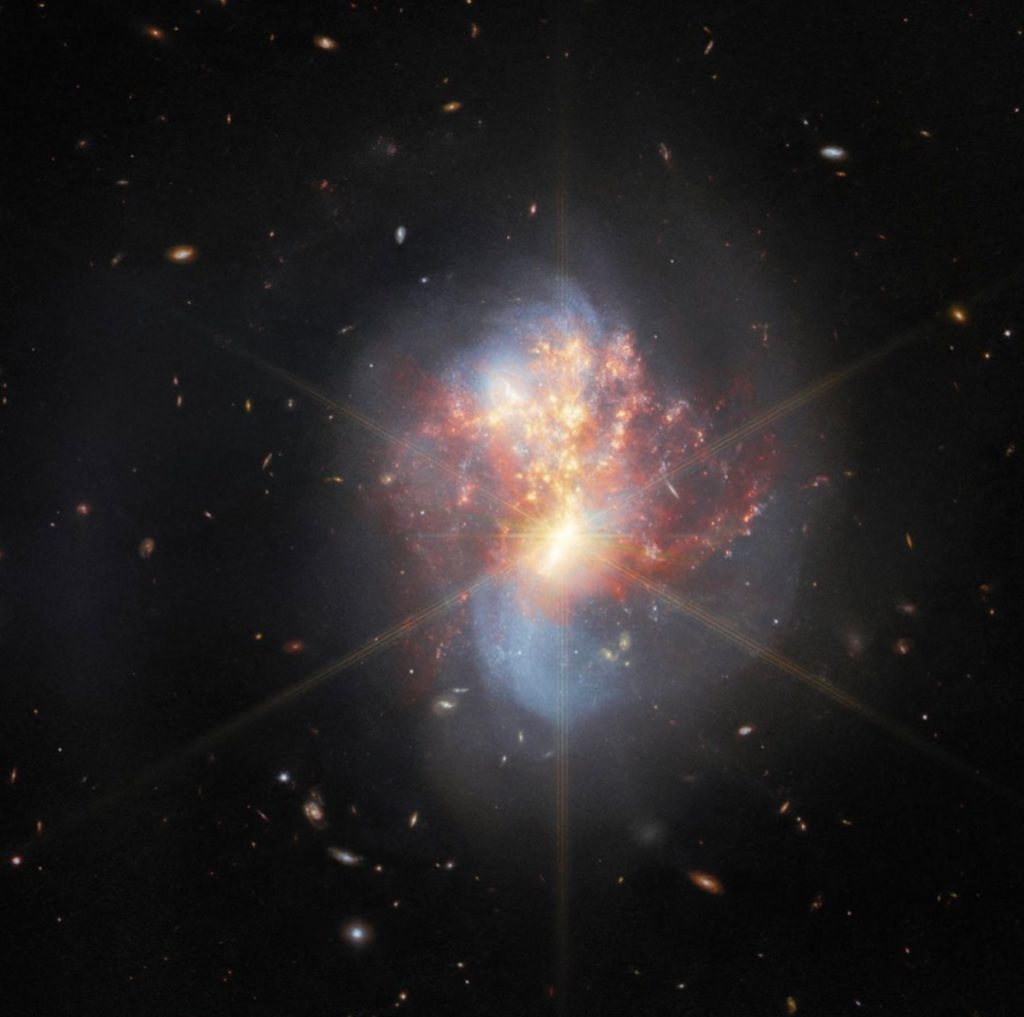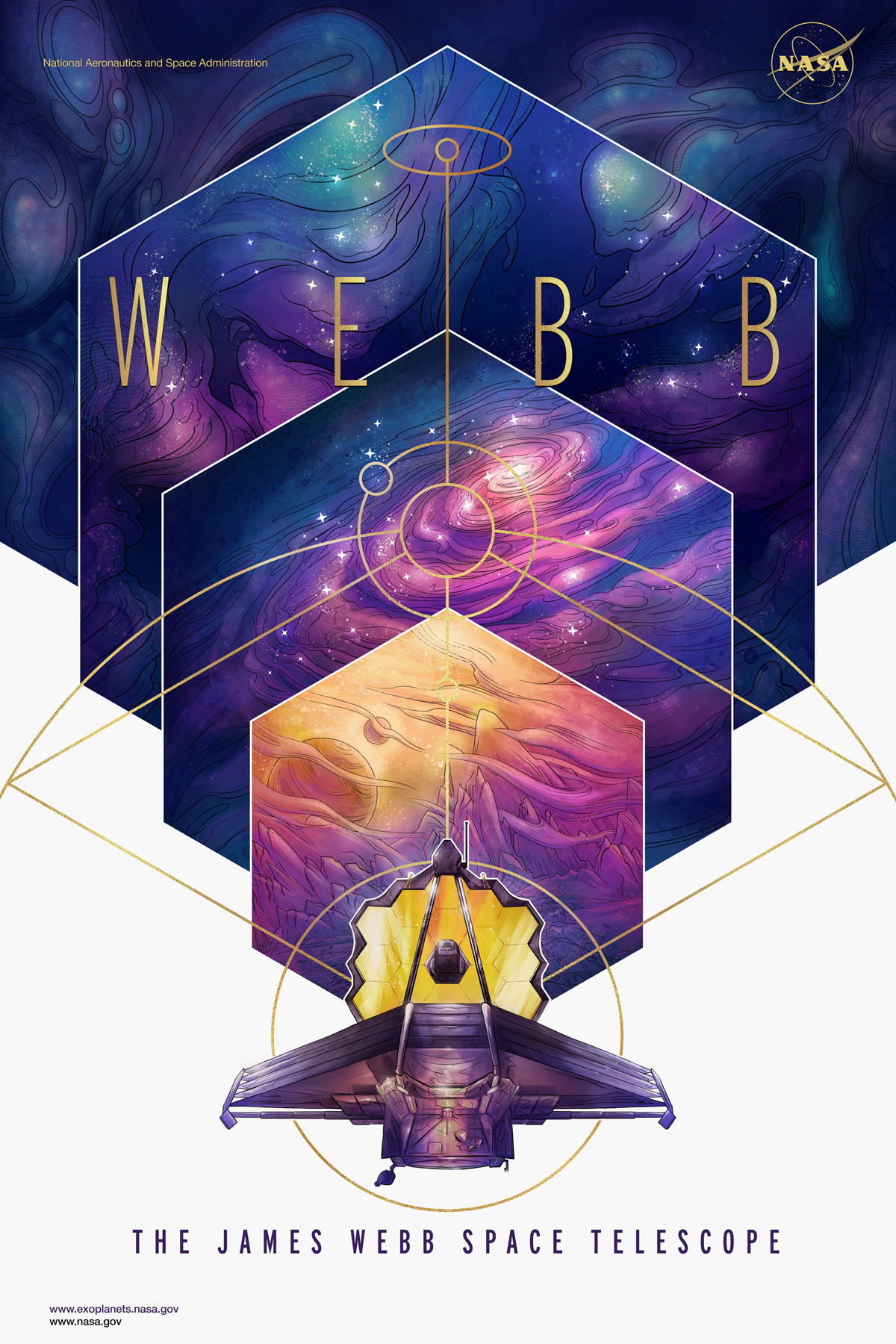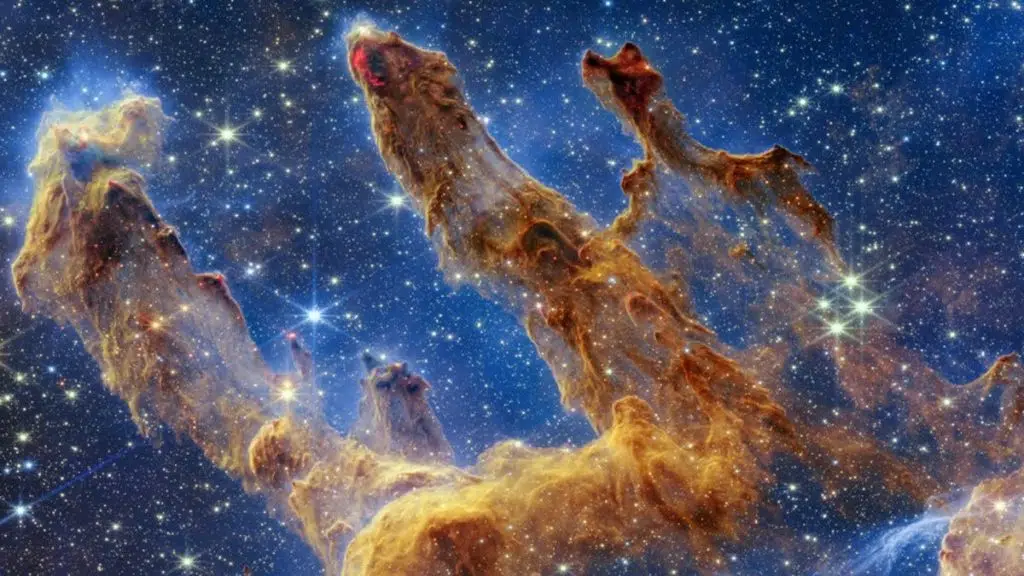
The James Webb Telescope has captured a galaxy merger; a pair of entwining galaxies crashing into one another in a new image released by NASA. The interacting galaxy system, formally known as IC 1623, lies about 270 million light-years from Earth in the constellation Cetus.
According to NASA, this type of merger is called a stardust, igniting a frenzy of star formation which creates new stars at a rate, “more than 20 times that of the Milky Way galaxy.”
The continuous and paramount stardust state reveals the crash is releasing intense infrared emissions. In fact, NASA states that the merging galaxies “may well be in the process of forming a supermassive black hole.”
The Webb Telescope
Due to the brightness of this merging galaxy system at infrared wavelengths, it makes it easier for the Webb telescope to capture as well as for astronomers to study.
The team used the telescope’s trailblazing infrared sensitivity technology – the Mid-InfraRed Instrument (MIRI), the Near-InfraRed Spectograph (NIRISpec) and the Near-InfraRed Camera (NIRCam) – to picture the galaxies crashing at very high resolution at significant wavelengths.

Before they put the James Webb telescope into use, a thick band of dust had blocked these spectacular insights from view. In addition, NASA noted the significance of the galaxies captured across the infrared portions of the electromagnetic spectrum, as it will help their research.
“They [astronomers] provided an abundance of data that will allow the astronomical community at large to fully explore how Webb’s unprecedented capabilities will help to unravel the complex interactions in galactic ecosystems,” the space agency said.
“[It will] help the astronomical community fully explore how Webb’s unprecedented capabilities will help to unravel the complex interactions in galactic ecosystems.”
Last week, NASA released photos of the spectacular and highly detailed landscape of the iconic Pillars of Creation.
The Pillars of Creation

The protostars are bright red orbs that typically have diffraction spikes and lie outside one of the dusty pillars. They look like majestic rock formations but are far more permeable. Knots with sufficient mass from within the pillars of gas and dust begin to collapse under their own gravity. They then slowly heat up. It is at this point that they create Protostars.
The event was first captured in 1995 by the NASA / ESA Hubble Space Telescope and again in 2014. The young stars are estimated to be only a few hundred thousand years old.
Many other world-class observatories, such as the Herschel Space Observatory of the European Space Agency (ESA), have also looked deeply into this region, which is practically overflowing with stars. Each advanced instrument offers researchers amazing new insight into this region.
See all the latest news from Greece and the world at Greekreporter.com. Contact our newsroom to report an update or send your story, photos and videos. Follow GR on Google News and subscribe here to our daily email!



